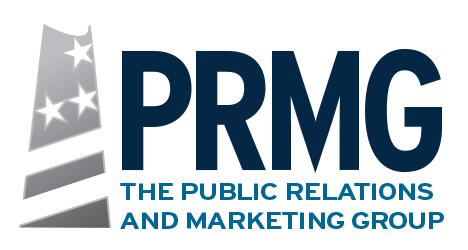At the Public Relations and Marketing Group, we pride ourselves in providing integrated services to our clients. With this in mind, I wanted to share with you how we have been doing this through content creation, Web advertising, landing pages and email marketing to develop and nurture leads for clients leading to new business. While these techniques are highly applicable to any professional service organization, they are adaptable to just about every business.
Step 1 – Create Your Content
The first step is to create compelling content. For professionals, this often takes the form of a free report or guidebook that will provide the reader with valuable information, which they will be willing to give up an email address for. The content should be mostly informational and not a sales pitch. There should be very little mention of the organization, perhaps with the exceptions of authorship and contact information at the end of the piece. Very often, this takes on the form of a downloadable brochure, white paper or eBook. The material should be written with the end-user in mind and not be overly technical (unless of course this is your target market). Some examples: for attorneys, it could be a guidebook on “What I Need to Know before I Purchase a Home”; for an ophthalmologist, “Will I Benefit from Laser Eye Surgery?”; for a home health care provider, “The Advantages of Using a Home Health Agency”; for a retailer or restaurant, you could just offer a coupon.
Step 2 – Set up Your Landing Page
A landing page is little more than a Web page that contains specific content. Landing pages can be built into websites, but they can also be used as part of Web advertising campaigns. When used in a Web advertising campaign, it is suggested that they provide access to your entire Website, but the goal is for the visitor to interact with the content on the page. To accomplish this, we suggest not having navigation links, but instead a text link in the body of the text inviting the visitor to visit your site. The landing page should also include brief descriptions of the downloadable content and the services of your organization, as well as an image of the content and a short form. You may also want to include a video, such as a TV commercial. The contact should be kept to a minimum and ask for just a name, company (if B to B), email address and phone number. It should also have a check box asking if the visitor wants to be contacted to set up a free consultation or meeting. However, we recommend that the only required fields be the email address, perhaps also a phone number if the visitor requests a meeting.
Step 3 – Advertise on the Web and Monitor
Use Google, Bing or Yahoo! AdWords or Facebook to bring traffic to the landing page. Target your demographics and keywords like you would for any other AdWords campaign. However, in this case, the ad should promote the availability of the free download. Monitor the ad’s performance using the advertising platform and Google Analytics. Test different offers to achieve the best results and to maximize your costs per click.
Step 4 – Integrate with Your Email Program
As visitors interact with your landing page, you will receive a form indicating that someone has downloaded the content or requested a consultation or meeting. You should then contact anyone requesting a meeting immediately. For the most efficiency, you want to program your contact form to dump information into an email program. (Our firm uses StreamSend.) You can also do this manually. We would then recommend that you set up Triggers. Triggers are e-mails that can be programmed to send automatically based on a database field, such as the date/time when an entry is created. This allows you to send out an email to a lead 24 or 48 hours after they have downloaded your content, providing them, for instance, additional content they may be interested in or a sales offer. Multiple Triggers can be set up.
Step 5 – Nurture Your Leads
Not everyone makes buying decisions at the same pace. Someone may have visited your site very early in their buying process for the purpose of researching the problem they have. Other visitors make buying decisions very quickly. The goal is to interact and nurture your contacts over time. For instance, on the initial landing page, we provide an opportunity for someone to contact you by phone or email to request a meeting. We use Trigger emails to provide automatic follow-up shortly thereafter. We also recommend that you develop an e-newsletter that you send out to clients and prospects at least on a monthly basis. This will help you to ensure that your leads are nurtured over time. You can invite these leads to connect with you using social media.
We hope this article was useful to you. As always, if you have any questions or would like to see samples of our work in this area, email johnzaher@theprmg.com or call us at (631) 207-1057.

 The Web can be a great place to showcase your product or service and get out your message directly to your customers. However, with the evolution of the Web into a crowded marketplace, being found easily by your target audience can often be a challenge. By strengthening your online presence and improving your rankings in search engines, you can enable consumers and media to find you at the precise moment that they are looking for information or need a particular product or service that you can provide.
The Web can be a great place to showcase your product or service and get out your message directly to your customers. However, with the evolution of the Web into a crowded marketplace, being found easily by your target audience can often be a challenge. By strengthening your online presence and improving your rankings in search engines, you can enable consumers and media to find you at the precise moment that they are looking for information or need a particular product or service that you can provide.


